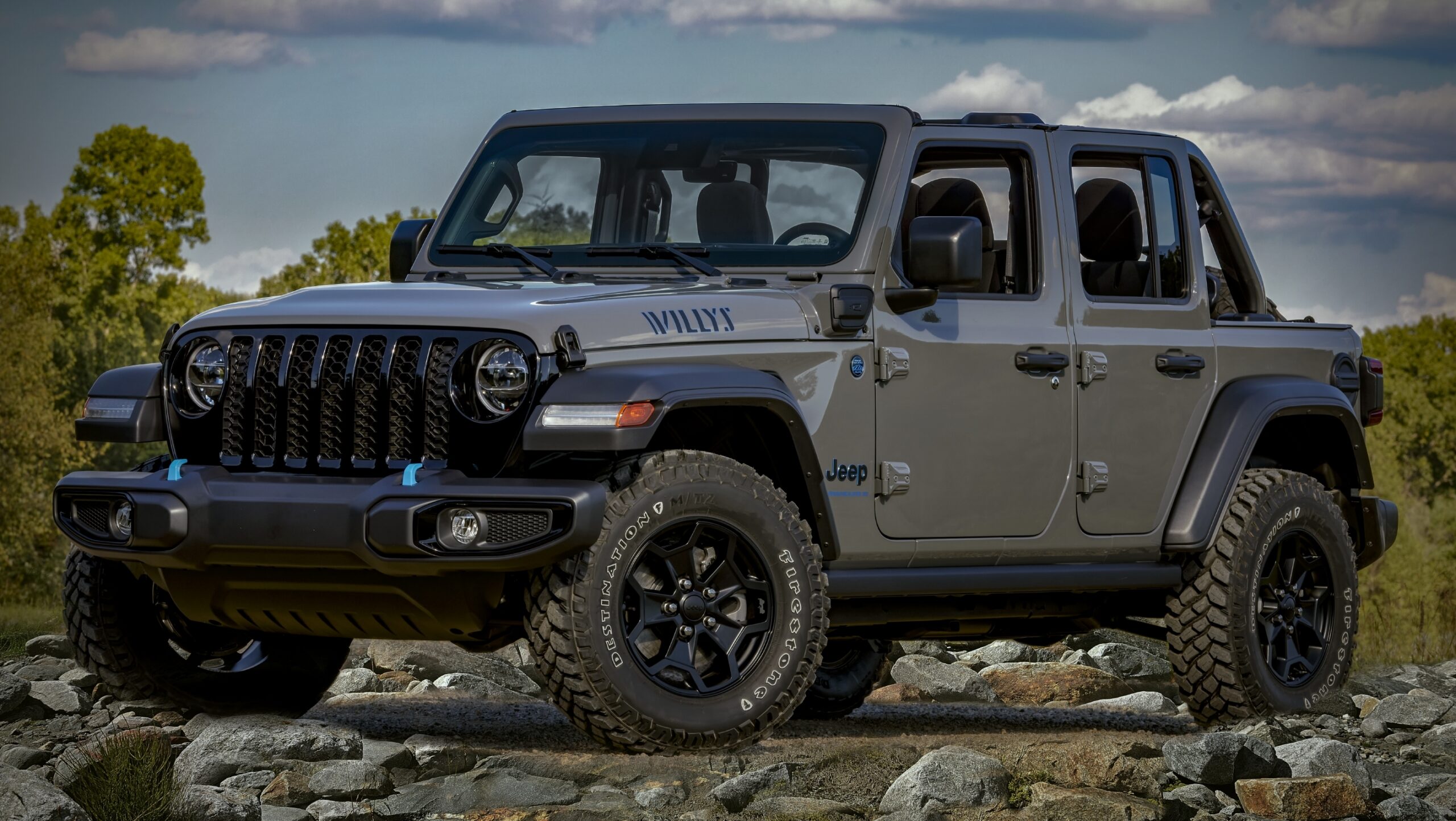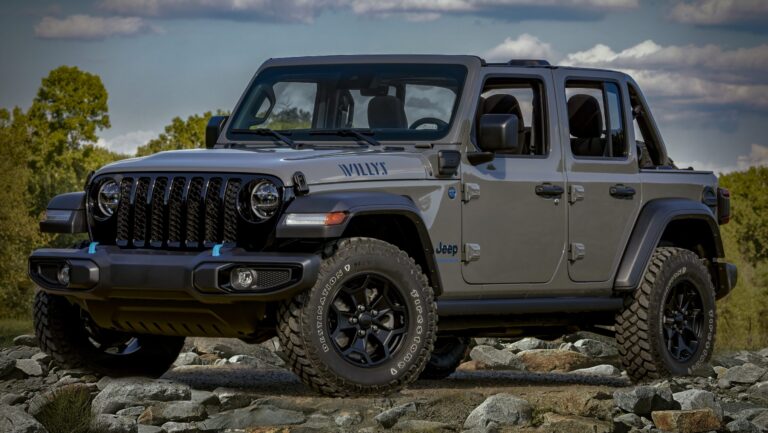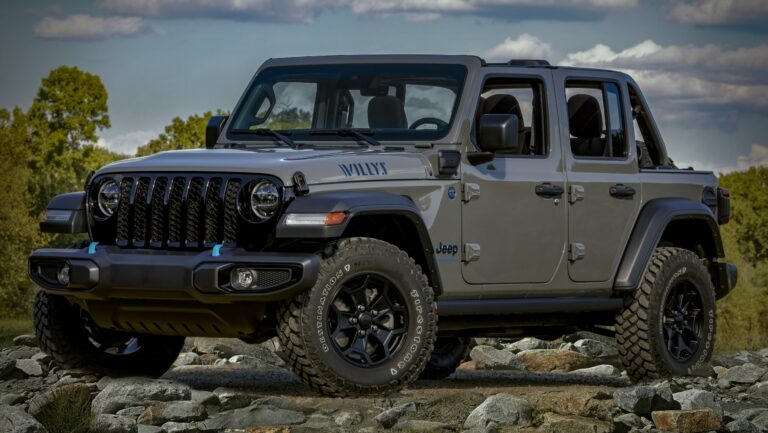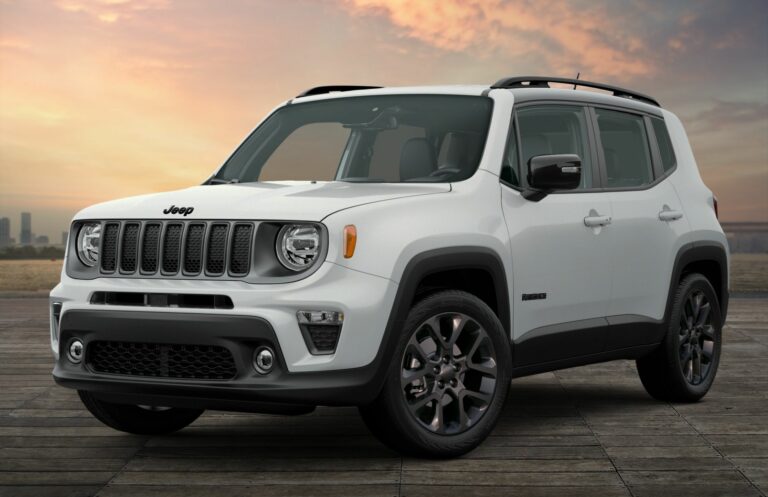Jeep M38 For Sale: A Comprehensive Buyer’s Guide to Owning a Piece of Military History
Jeep M38 For Sale: A Comprehensive Buyer’s Guide to Owning a Piece of Military History jeeps.truckstrend.com
The rumble of a vintage engine, the unmistakable silhouette against a rugged landscape, and the enduring legacy of a machine built for purpose – for many enthusiasts, the allure of the Jeep M38 is undeniable. More than just a vehicle, the M38 is a tangible piece of military history, a testament to American engineering during a pivotal era. For those contemplating the exciting prospect of a "Jeep M38 For Sale," this comprehensive guide aims to illuminate every facet of the journey, from understanding its unique heritage to navigating the intricacies of purchase and ownership.
Understanding the M38: A Brief History and Specifications
Jeep M38 For Sale: A Comprehensive Buyer’s Guide to Owning a Piece of Military History
Born from the demands of the Korean War, the Willys M38 (formally designated MC) was the military’s successor to the legendary Willys MB and Ford GPW of World War II. Produced primarily from 1950 to 1952, with a total of approximately 61,423 units manufactured, the M38 was engineered for extreme durability and operational readiness in harsh combat environments.
What sets the M38 apart from its civilian counterparts, such as the CJ-3A (which it closely resembles superficially), are its myriad military-specific features:
- 24-Volt Electrical System: Unlike the civilian 6-volt or 12-volt systems, the M38 utilized a robust 24-volt system, essential for powering military radios and equipment, and providing reliable cold-weather starting. This system required a specialized generator and two 12-volt batteries connected in series.
- Waterproofing: Designed to be submersible up to 60 inches, the M38 featured a waterproof ignition system, sealed electrical components, and a deep-water fording kit, making it capable of traversing rivers and streams.
- Reinforced Chassis and Body: The frame was beefed up, and the body received numerous reinforcements, including a deeper body tub to accommodate larger military tires and equipment. The windshield was hinged at the top for easy opening and featured a built-in defroster vent.
- Military-Specific Equipment: Standard features included a pintle hook for towing military trailers, blackout lights for night operations, a shovel and axe mounted on the side, and provisions for a jerry can and spare tire.
- Engine: The M38 was powered by the robust and reliable Willys F4-134 "Hurricane" flathead four-cylinder engine, producing around 72 horsepower. This engine, combined with a T-90 three-speed manual transmission and a Dana 18 transfer case, provided impressive low-end torque and legendary off-road capability.
- Axles: It utilized Dana 25 front and Dana 44 rear axles, known for their strength and durability.

These features collectively made the M38 a formidable workhorse, capable of enduring the most demanding conditions. Its unique blend of ruggedness, historical significance, and mechanical simplicity continues to captivate collectors and off-road enthusiasts today.
Why Buy a Jeep M38? The Appeal of a Military Icon
The decision to pursue a "Jeep M38 For Sale" often stems from a deeper appreciation than just acquiring a vehicle. Owners are buying into a piece of history, a symbol of American resilience and ingenuity. Here are compelling reasons why the M38 remains a sought-after classic:
- Historical Authenticity: Owning an M38 means owning a vehicle that served its country, potentially having seen action or supported critical operations. This connection to the past is a powerful draw for many.
- Unparalleled Durability and Simplicity: M38s were built to be repaired in the field with basic tools. Their mechanical simplicity makes them ideal for DIY enthusiasts, with fewer complex electronics to troubleshoot than modern vehicles. Parts, while sometimes specific, are generally robust and designed for longevity.
- Legendary Off-Road Capability: At its core, the M38 is a Jeep, and that means exceptional off-road prowess. Its short wheelbase, high ground clearance, and robust 4×4 system make it surprisingly capable on trails, mud, and uneven terrain.
- Investment Potential: Well-maintained or professionally restored M38s have shown a steady appreciation in value, making them not just a hobby but potentially a sound investment in the classic vehicle market.
- Community and Events: Ownership opens doors to a vibrant community of military vehicle enthusiasts. Joining clubs, participating in reenactments, and attending shows are major benefits, offering camaraderie, technical advice, and opportunities to showcase your vehicle.
- Unique Driving Experience: Driving an M38 is a visceral experience – the unassisted steering, the manual transmission, the open-air feel. It’s a journey back in time, providing a raw and engaging connection to the road (or lack thereof) that modern vehicles simply cannot replicate.
Navigating the Market: Where to Find a Jeep M38 For Sale
Finding the right "Jeep M38 For Sale" requires a strategic approach. The market isn’t as saturated as for more common classic cars, but dedicated channels exist:
- Specialized Online Marketplaces: Websites like G503.com (the leading forum for military vehicle enthusiasts), Hemmings.com, ClassicCars.com, and BringATrailer.com frequently list M38s. These platforms often cater to serious buyers and sellers.
- General Online Classifieds: eBay Motors and Craigslist can yield finds, though they require more diligence due to the broader range of sellers and conditions. Be wary of scams and always inspect in person if possible.
- Military Vehicle Dealers and Restorers: Several businesses specialize in the sale and restoration of vintage military vehicles. These sources often offer higher-quality, fully restored examples, but at a premium price. They can also be a valuable resource for parts and advice.
- Live and Online Auctions: Major classic car auction houses (e.g., Mecum, Barrett-Jackson, RM Sotheby’s) occasionally feature M38s, particularly high-quality or historically significant examples. Online auction platforms are also becoming more common.
- Military Vehicle Shows and Swap Meets: Attending events like the MVPA (Military Vehicle Preservation Association) Conventions or local military vehicle shows is an excellent way to see M38s in person, network with owners, and sometimes find vehicles for sale by word of mouth.
- Clubs and Forums: Joining M38-specific or general military vehicle clubs can provide leads. Members often know of vehicles for sale within their networks before they hit public listings.
Regardless of where you find a potential M38, always prioritize thorough research, asking detailed questions, and requesting comprehensive photos and documentation.
What to Look For: A Buyer’s Inspection Checklist
When considering a "Jeep M38 For Sale," a meticulous inspection is paramount. These vehicles are over 70 years old, and their condition can vary wildly.
- Body and Frame Rust: This is often the biggest killer. Inspect the frame rails, hat channels (under the floorboards), floorboards themselves, toolboxes, and the bottom of the body tub. Look for perforations, weak spots, or excessive bondo.
- Engine and Drivetrain:
- Engine: Check for leaks (oil, coolant), unusual noises (knocking, ticking), and excessive smoke from the exhaust. A compression test can reveal engine health. Ensure the 24V system is functional.
- Transmission and Transfer Case: Test all gears, including reverse, and ensure the 4WD engages smoothly. Listen for grinding or excessive noise.
- Axles: Check for leaks around the differential covers and axle seals.
- Electrical System (24-Volt): This is unique. Ensure all lights (headlights, blackout lights, dash lights), gauges, and the starter work correctly. Inspect wiring for fraying, splices, or corrosion. Many M38s have been converted to 12V, which can simplify some things but detracts from originality.
- Suspension and Steering: Check for worn leaf springs, shocks, and steering components (tie rods, drag link, steering box). Excessive play in the steering wheel is a common issue.
- Brakes: Test the brakes thoroughly. Inspect brake lines for rust or leaks and check the condition of drums, shoes, and wheel cylinders. Remember, these are manual drum brakes and won’t stop like a modern car.
- Originality vs. Restoration: Determine if the vehicle is largely original, a partial restoration, or a full frame-off restoration. Look for correct military components (pintle hook, pioneer tools, military gauges, correct lighting). Matching numbers (engine block to chassis VIN, if possible) adds value for collectors.
- Documentation: A clear title is essential. Any service records, past registration, or military history can add significant value and peace of mind.
If you’re not mechanically inclined, consider hiring a specialist for a pre-purchase inspection.
Understanding Condition and Pricing: What to Expect
The price of a "Jeep M38 For Sale" is heavily dependent on its condition, originality, and the quality of any restoration work. Here’s a general breakdown:
| Condition Category | Description | Estimated Price Range (USD) | Key Considerations |
|---|---|---|---|
| Basket Case/Parts Vehicle | Non-running, heavily rusted, incomplete, often missing major components. Requires total, extensive restoration. | $3,000 – $8,000 | Ideal for highly experienced restorers with significant time and budget. High potential for hidden costs. Can also serve as a parts donor for another project. |
| Running Project | Runs and drives, but needs substantial mechanical, electrical, and body work to be roadworthy and reliable. Not for immediate daily use. | $8,000 – $15,000 | A good starting point for a hands-on enthusiast. Allows you to address issues systematically. Budget for significant parts and labor costs. |
| Driver Quality | Functional and relatively solid. Presentable but not perfect, may have minor cosmetic flaws, some rust, or small mechanical quirks. Can be enjoyed immediately. | $15,000 – $25,000 | Offers a good balance of cost and usability. A great option for those who want to drive and enjoy their M38 without committing to a full restoration. Expect ongoing minor maintenance. |
| Partially Restored | Significant work completed (e.g., new engine, bodywork, paint), but not fully finished. Requires remaining work to be completed by the buyer. | $20,000 – $35,000 | Can save time on major, costly tasks. Crucial to verify the quality of completed work. Understand precisely what remains to be done and the associated costs. |
| Fully Restored/Show Quality | Near-perfect condition, high-quality professional restoration, often historically accurate with correct markings and components. Ready for shows or immediate enjoyment. | $35,000 – $60,000+ | Commands a premium price reflecting the extensive investment in time, labor, and parts. Ideal for collectors or those who want a turn-key classic. Ensure documentation of the restoration process. |
| Exceptional/Museum Quality | Rare, concours-level restoration, often with documented military service history or unique provenance. Flawless and historically accurate. | $60,000 – $100,000+ | The top tier for serious collectors and investors. These vehicles are often meticulously researched and restored to exact military specifications. Investment potential is highest here. |
Disclaimer: These prices are estimates and can vary significantly based on location, market demand, specific modifications, originality, and the overall quality of the restoration or preservation.
The Restoration Journey: Tips for New M38 Owners
For many, acquiring a "Jeep M38 For Sale" is just the beginning of a rewarding journey. Restoration can be a significant undertaking, but highly gratifying.
- Sourcing Parts: While not as abundant as for a Ford Model A, parts for M38s are available. New Old Stock (NOS) military parts, high-quality reproduction parts, and used components can be found through specialized dealers, online forums, and swap meets.
- Understanding the 24V System: Don’t fear the 24-volt system. While different, it’s reliable. Learn its intricacies, acquire a good wiring diagram, and consider joining a forum where experienced owners can offer guidance. Avoid converting to 12V unless originality is not a concern, as it often involves compromises.
- Join the Community: The military vehicle community is incredibly supportive. Online forums (like G503.com) and local clubs are invaluable resources for technical advice, parts leads, and camaraderie.
- Patience and Persistence: Restoration is a marathon, not a sprint. There will be challenges, but each one overcome adds to the satisfaction. Set realistic timelines and enjoy the process.
- Invest in Manuals: An original or reproduction military service manual (TM 9-8012 and TM 9-1801B are key) is indispensable. They contain detailed diagrams, specifications, and troubleshooting guides.
Conclusion: The Enduring Legacy of the M38
The pursuit of a "Jeep M38 For Sale" is more than a transaction; it’s an embarkation on an adventure rooted in history, mechanical appreciation, and a vibrant community. From its rugged origins on the battlefields of Korea to its esteemed place in classic vehicle collections today, the M38 stands as a testament to enduring design and functionality.
Whether you envision a meticulous restoration project, a reliable off-road companion, or a showpiece that sparks conversations, owning an M38 offers a unique and deeply rewarding experience. With careful research, a thorough inspection, and a passion for preserving history, you can become the proud custodian of this iconic military vehicle, ensuring its legacy continues to rumble on for generations to come.
Frequently Asked Questions (FAQ) about the Jeep M38
Q1: What’s the main difference between a Jeep M38 and a civilian Willys CJ-3A?
A1: While visually similar, the M38 is a military-spec vehicle. Key differences include its 24-volt electrical system, waterproof ignition and components, deeper body tub, reinforced chassis, military-specific equipment (like blackout lights and pintle hook), and provision for pioneer tools. The CJ-3A typically ran on a 6-volt system and lacked the military-grade waterproofing and reinforcements.
Q2: Is the 24-volt electrical system a major problem for ownership?
A2: Not necessarily a "problem," but it requires understanding. It’s different from common 12V systems. Components like generators, regulators, and starters are 24V-specific. While some owners convert to 12V, maintaining the original 24V system adds to authenticity and can be reliable if properly maintained. Parts are available, but might be less common than 12V equivalents.
Q3: Are parts for the Jeep M38 readily available?
A3: Yes, parts are generally available, but you might need to look beyond mainstream auto parts stores. Specialized military vehicle parts suppliers, online forums (like G503.com), swap meets, and even some reproduction parts manufacturers cater to the M38 market. Common mechanical components like engine parts, brakes, and drivetrain parts are often shared with civilian Jeeps of the era, simplifying some repairs.
Q4: Can I drive an M38 on public roads?
A4: Yes, in most jurisdictions, as long as it’s properly registered, insured, and meets basic safety requirements (lights, brakes, turn signals if required in your state). However, remember it’s a vintage vehicle with manual steering, manual drum brakes, and limited top speed, so it’s best suited for slower roads, parades, or off-road use rather than daily highway commuting.
Q5: What kind of fuel economy can I expect from an M38?
A5: The M38, with its F4-134 Hurricane engine, is not known for its fuel efficiency. You can generally expect around 10-15 miles per gallon (MPG), depending on driving conditions, vehicle tuning, and terrain.
Q6: Is a Jeep M38 a good first classic vehicle for a new enthusiast?
A6: It can be, especially if you’re comfortable with basic mechanical work and appreciate simplicity. Its robust design and relatively straightforward mechanics make it approachable for DIY repairs. However, the unique 24V system and military-specific components might present a steeper learning curve than a more common civilian classic. Joining a community is highly recommended.
Q7: How much does it typically cost to restore an M38?
A7: The cost of restoration varies enormously based on the initial condition of the vehicle and the desired level of restoration. A full, professional, show-quality restoration can easily cost anywhere from $20,000 to $50,000 or more, in addition to the purchase price of the vehicle. A DIY restoration on a running project might cost less in labor but still require significant investment in parts. It’s crucial to set a realistic budget and prioritize what you want to achieve.




